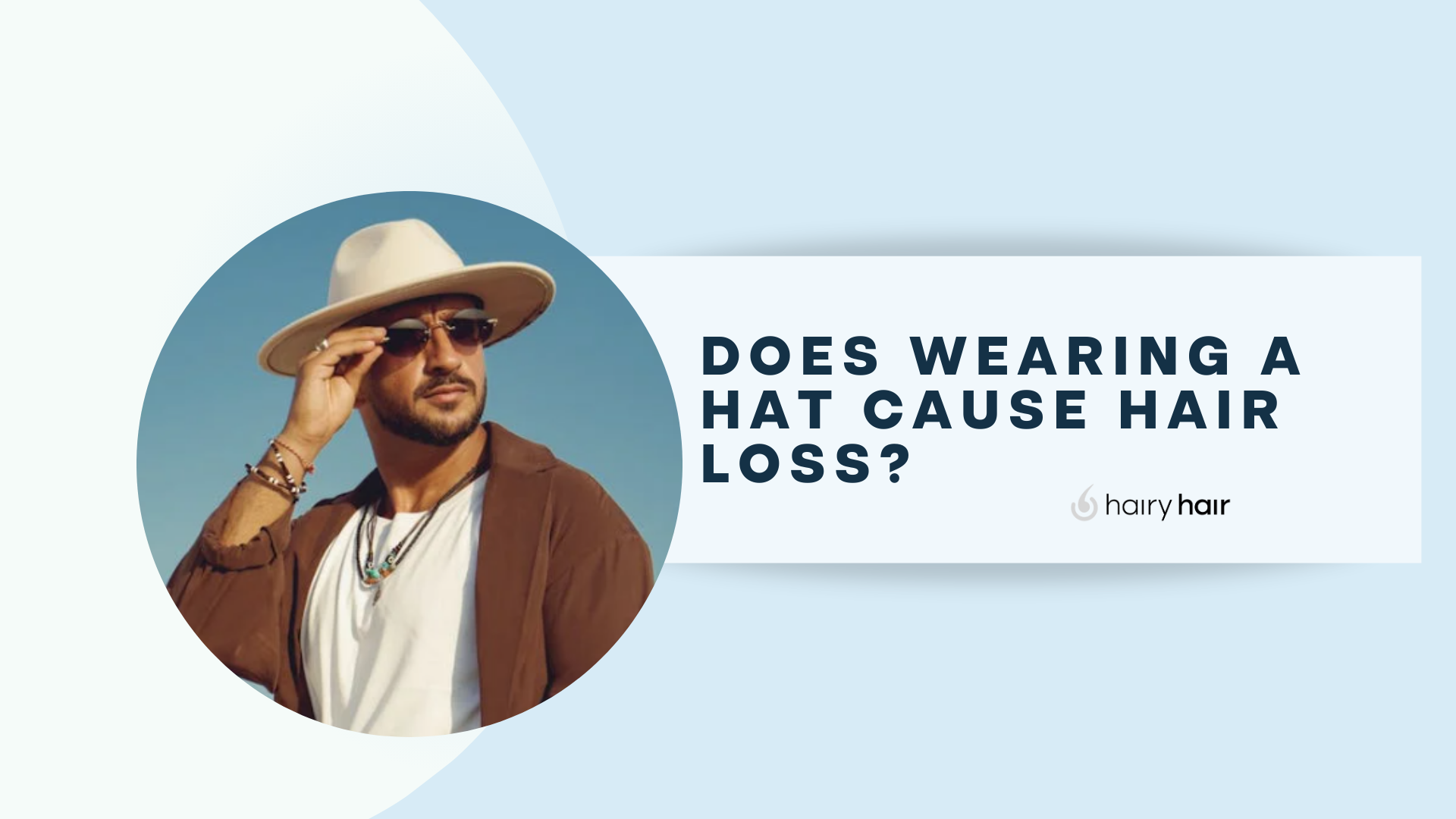
Table of Contents
Does Wearing a Hat Cause Hair Loss?
You may have heard the myth that hats and hair loss are connected – but the good news is if you enjoy wearing hats, you don’t need to go without. While many people believe that wearing hats can lead to thinning hair and baldness, there is no real scientific evidence to back this up.
Hair loss is mainly influenced by other factors such as genetics, hormonal changes and medical conditions. In this article, we’ll go into more detail about hair loss and its causes to answer the question: does wearing a cap cause hair loss?
Does Wearing Hats Cause Hair Loss?
If you wear hats like millions of men around the world, don’t worry – it’s probably not contributing to your chances of experiencing hair loss. Male pattern baldness is the most common form of hair loss and that’s down to genetics and male sex hormones rather than wearing hats, even daily hat use.
Male pattern baldness is caused by sensitivity to a hormone called DHT – which is responsible for shrinking your hair follicles, leading to gradual hair loss and potential baldness. You can often tell if you might end up with male pattern baldness if you have family members with hair problems – but the key takeaway is that hats and hair loss aren’t really correlated and your headgear is not usually to blame.
Can Hats Cause Hair Loss?: The Research
Most research suggests that wearing a hat doesn’t contribute to hair loss. For example, a Plastic and Reconstructive Surgery study explored hair loss in 92 pairs of identical twins. The study found that twins who had worn a hat experienced less hair loss than twins who didn’t wear hats.
Other environmental factors that were linked with hair loss included drinking more than four alcoholic drinks a week, spending more money on hair loss products and increased exercise duration – suggesting that lifestyle choices are more indicative of hair loss than wearing hats.
Is Wearing a Hat Bad For Your Hair?
Even though hats are unlikely to cause hair loss, some researchers believe that if you wear a very tight hat this could cause tension and decrease blood flow to the hair follicles, causing hairs to fall out over time. This leads to a condition called traction alopecia, which normally results from tight hairstyles such as braids and dreadlocks.
An International Journal of Dermatology study tested 199 Korean nurses wearing tight hats for traction alopecia. Around 3.5% of the nurses experienced hair loss at the site where the nurse caps were pinned. Even though this is only a small percentage and there’s not much more research in the area, it’s best to opt for loose fitting hats with breathable materials to reduce your risk of experiencing hair loss.
More Likely Causes of Hair Loss
As mentioned before, the most common cause of hair loss in men is male pattern baldness, also called androgenic alopecia. This genetic hair loss condition, caused by sensitivity to DHT, is progressive and can only be managed with treatment such as medications and hair transplant surgery. Other causes of hair loss include hormonal changes, stress, medical conditions and certain medications and lifestyle factors. Hair loss can also be a normal part of the aging process.
Hair Loss Treatment Options
If you’re experiencing overall thinning, a receding hairline or bald spots there are many hair loss treatment options available. The type of treatment you should choose depends on the cause of your hair loss.
For instance, if you have temporary hair loss from stress-induced telogen effluvium or traction alopecia from tight hairstyles or a tight hat, simple lifestyle changes can be enough to reverse the effects. However, if you’re dealing with a progressive condition like male pattern baldness, here are some of the most effective methods:
Medications
Medications are one of the best ways to combat hair loss in the long-term. Experts agree that finasteride and minoxidil are the best drugs to treat thinning hair and baldness, because they target DHT and increase blood flow to the scalp, activating hair follicles and stimulating regrowth.
The HairyHair treatment plan is a great choice for men who are looking for a convenient, effective and discreet way to manage hair loss. The single daily pill contains a combination of science-backed ingredients, including both finasteride and minoxidil, that are clinically proven to work and the best part is – no clinic visits are needed, your treatment is delivered to your door as part of the subscription service.
Hair Transplant Surgery
This is a permanent solution to hair loss. A hair transplant involves moving hair follicles from a donor site to an area affected by balding using one of two methods: follicular unit transplantation (FUT) or follicular unit extraction (FUE).
While hair transplant surgery is more expensive than other hair loss treatments, it can be a highly effective hair restoration method and is minimally invasive. After surgery, you should experience hair growth as normal from each transplanted hair follicle – leading to long-term thick and healthy hair.
Low-Level Laser Therapy
Low-level laser therapy (LLLT) uses lasers at specific wavelengths to stimulate cellular activity in your hair follicles, promoting new hair growth. It’s another effective, non-invasive and long-term solution for men with conditions like androgenetic alopecia.
Final Thoughts
People experience hair loss from a variety of causes, but wearing hats is not usually one of them. Research suggests that hats and hair loss are not connected and the more likely causes include hair loss conditions like male pattern baldness, medical issues, hormonal changes, stress, natural aging and lifestyle factors.
Although, it is possible to experience traction alopecia from wearing an extremely tight hat because it can put tension on the hair follicles and reduce blood flow to the scalp. To reduce your risk of experiencing hair loss, opt for loose fitting hats with breathable materials.